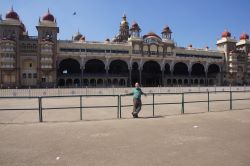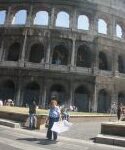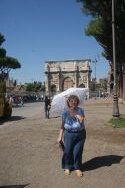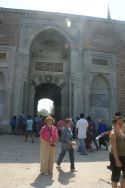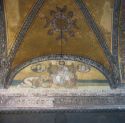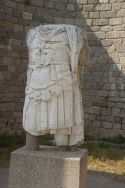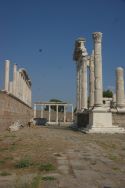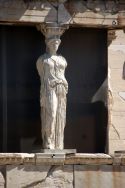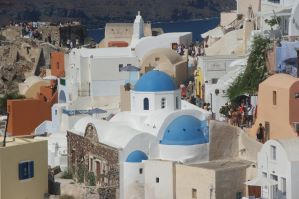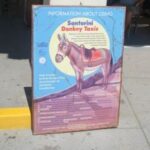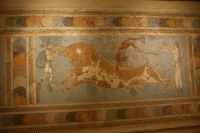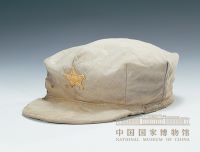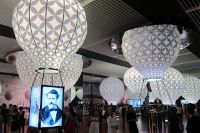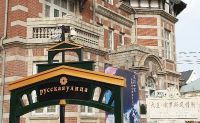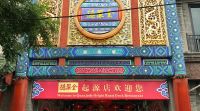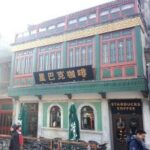From Bloomington-Normal, Caterpillar’s headquarters is about 45 miles away—and 45 minutes (unless, of course, you go faster than 60 miles an hour on the Interstate). Here, Caterpillar has a plant we visited that’s closer to 2 hours away—and probably not much further than 45 miles away. The difference is partly attributable to the state of infrastructure (i.e. inadequate roads, too many cars), and partly due to the existence of a whirlpool effect in the sea of commerce. To get to the Power Division of Caterpillar (which has become the global source for two engines that Cat moved to Hosur, the town it is in, from plants in Japan and Indiana, which needed the capacity to produce more) meant crossing state lines. There are 28 in India, sort of arranged along ethnic lines (remember those 14 or so official languages!), with chief ministers who seem to have more power than American governors, including the power to attract industry (which is why Cat is in Tamil Nadu, the next state over, rather than Karnataka, where sits Bangalore).
Another power the states have is to set commerce standards, and that’s where the whirlpool in the commercial sea occurred that interrupted our journey and probably sinks a lot of business boats. We were pulled out, along with every commercial vehicle, to pay a tax on whatever goods (and that includes people) are moving from one state to another. The taxes vary greatly, our guide stated. It’s as though if you distributed goods from Illinois to Indiana, you would have to stop at the state line and pay a duty on those goods. The CAT managers we spoke to said the parliament is probably going to pass a general sales tax that will end the state taxation of commerce that seems to be, as I suggested earlier, one of the drawbacks to doing business in a sea of chaos.
When we turned off the main road to the entrance way to Caterpillar—through a small town—and into the campus, we were again in an Island of Excellence. Caterpillar is the biggest Illinois exporter, and over 60% of its revenue comes from overseas sales. As I wrote from Beijing in May, those sales in Asia have been problematic because Caterpillar has positioned itself on the dimensions of quality and durability, while Chinese buyers (and also Indian ones) are more concerned about price, and are willing to forego features that might be standard on equipment for Americans (such as air conditioning, the Cat managers noted). In shifting the manufacturing overseas, Cat has attempted to address its costliness while still keeping up its quality. The effort has resulted in a plant that for all intents and purposes could be in Mossville as easily as in Hosur—at a fraction of the cost. For example, the plant employs several hundred employees, but, though the shop is union, only about 30% belong to the union. The remainder are temporary help, and the pay differential is significant; a union employee with substantial experience can earn up to $8,000 a year, if I understood correctly, while temporaries earn $1,200 a year. The challenge to standardize the quality involves standardizing the quality of the work force, which has meant a cultural transformation; the trinity seems to be quality, safety, and conservation. Each employee (I would guess tenure track) will have to come up with 6 ideas for improvements (the Japanese pioneered this; it is called kaizen)—but the average is 30. In addition, the concepts of working in a safe environment have spread away from work and into the home; workers now wear seat belts we were assured, and the whole family is enlisted in the creating of safety slogans, for examples. The plant is run on Caterpillar production standards to obtain high performance (quality, safety, production—over 2,000 days with no time lost due to accident), and everywhere charts measuring the things Cat has established as critical, with input from the plant.
The other task, they told us, was to bring the suppliers onboard as well, because getting the cost of the units down depends not just on Cat’s employees, but its suppliers as well. The plant still uses a lot of foreign parts (I think he said 60%), but the goal is to shrink that to 20-40% eventually. The market leader is Cummings, which has 95% of its engine parts coming from Indian manufacturers. Ironically, I recall the reluctance of Cummings to outsource, but the Indiana-based company felt it had no choice—because its chief rival, Caterpillar, had done so! The main seaport for export is Chennai, still four hours away—but a few years ago, it was eight.
The common theme of the businesses we’ve visited is the importance of hiring and retaining qualified personnel. Cat says it hires a lot of vocational school graduates, who train for 8 weeks in the classroom, and then spend a day on a simulated assembly line. Apart from the free transportation and free meals Cat provides, we could have been in Peoria (and of course, the lower wages). The plant is an example of Cat’s response to the pressures of global competition, and how it is playing the quality/price game—in a division whose products mostly go to build other Caterpillar products. It was almost like visiting a Japanese company in the early 1990s, when the performance attracted both fear and emulation, and management gurus wrote books about Theory J on how to compete with the Japanese.
Ironically, we went to a Japanese company afterwards, or rather a Japanese-Indian joint venture that was a really small operation by comparison; the Japanese company has only 1,000 employees in its plants. It makes hydraulic machines, and while we saw labor-intensive operations, it resembled a small machine shop more than the kind of world-class operation we saw at Caterpillar. One takeaway, though, was the presence of a rain harvesting program, which is an effort the plant makes to reduce cost by capturing water during the monsoon season, storing it, and using it the rest of the year.
We’re leaving Bangalore for Bombay (Mumbai), with part of tomorrow being a tour of the important sights of the city, which was founded early in the 17th century. For business purposes, I’m glad we came here, and appreciate the variety of the businesses we’ve seen—first class Western and Indian companies. Interestingly, Harvard Business School thinks so too. In addition to a number of cases on companies here, including the not-for-profit we visited, Harvard Business School students are also in our hotel, visiting some of the same places we have.
Enjoy the weekend.
Namaste.

